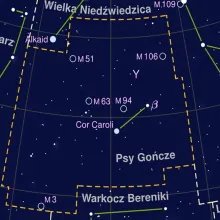Constellation Corvus
Corvus is a small constellation located in the Southern Hemisphere, representing a crow or raven. Its name is Latin for "raven" or "crow," and it is one of the 48 constellations listed by the 2nd-century astronomer Ptolemy. Although small in size, Corvus is relatively easy to identify due to its distinctive shape, resembling a quadrilateral or a crooked box.



